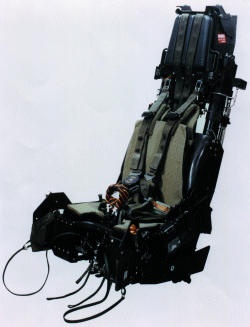BF Goodrich and Martin-Baker are to identify potential improvements to their current products under the US Air Force/Navy Joint Ejection Seat Programme (JESP).
Last month, both companies received contracts for Phase I of JESP, which involves trade studies and limited risk-reduction testing to be completed by November.
JESP, mandated by Congress, could lead to the qualification of next-generation ejection seats by 2004-5. The new seats are expected to be candidates for installation in the Joint Strike Fighter (JSF).
To create the specification, the joint USAir Force/Navy programme office has taken "the strengths and weaknesses of all the seats and extended the requirements in each area", such as high-speed and low-speed ejection performance, says Jeff Yaker, president of BFGoodrich Aircraft Seating & Propulsion Products.
In Phase 1, the two companies will identify improvements and the cost of incorporating them into designs. The JESP specification is performance-, not cost-driven, says Yaker. "But the cost for an advanced seat may be only incrementally more than the current seat."
The programme is intended to lead to qualification of a "generic" seat - designed to fit multiple platforms - by 2004-5, says Yaker. The highest profile application eyed by Congress is the JSF, although both teams have selected a version of Martin-Baker's Eurofighter seat for their proposals.

"The JSF specification does not require an advanced seat, but the availability of an affordable one could change that," says Yaker.
BFGoodrich will study improvements to all three ejection seats in its product line, such as the former Boeing/ Douglas ACES II and former UPCO/Stencel S-111S, but Yaker believes the Russian Zvezda K-36 seat is likely to prove the best choice for its superior high-speed ejection performance.
Having acquired US K-36 licensee IBP Aerospace, BFGoodrich is continuing to "Americanise" the Russian K-36 seat. Work on integrating US pyrotechnic and electrical systems into the seat is close to completion, and JESP is likely to become the main funding vehicle for qualifying a K-36.
Source: Flight International























